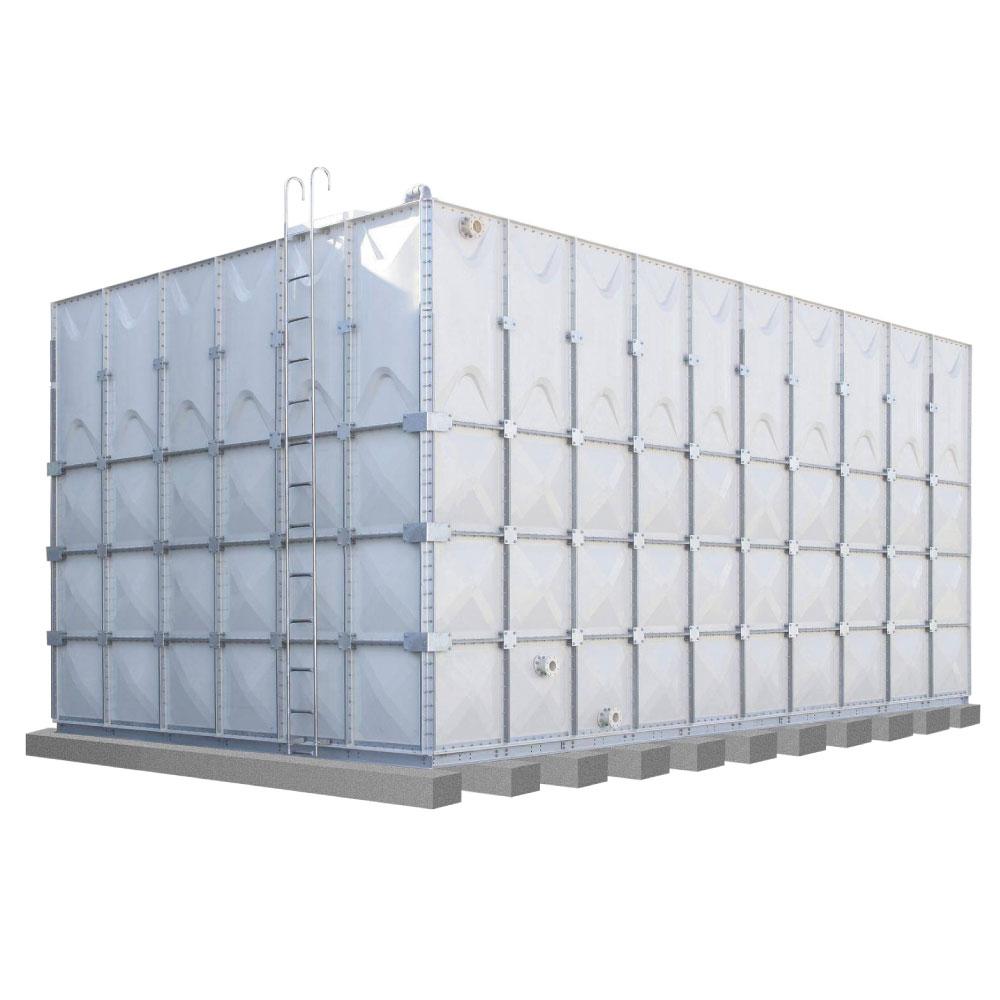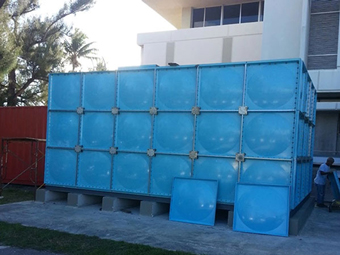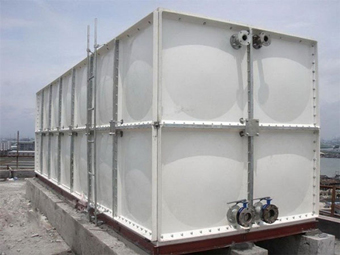GRP Water Tank
GRP water tank meaning is GRP Panel Tanks that are an good way to store water. Grp panel water tank is a modular system, which enables a water storage tank of any desired size to achieve. The panel is made of materials of fiberglass reinforced plastics which make the tank pliable.
As grp water tank manufacturers in china, we supply many types of grp tanks, especially sectional & panel water storage tanks, frp potable water tank and grp sectional tanks. Our service has many features, such as fast delivery, competitive price, especially grp water tank installation service.
Description
A GRP water tank is one of the most efficient and durable water storage solutions used worldwide. GRP stands for Glass Reinforced Plastic, also known as fiberglass. This composite material combines plastic with strong glass fibers, creating a lightweight yet highly durable tank that can store large volumes of water safely and reliably. GRP tanks are popular for residential, commercial, and industrial water storage because of their corrosion resistance, modular design, and long service life.
Why Choose a GRP Water Tank?
-
Corrosion Resistance
Unlike steel tanks that may rust over time, GRP tanks are immune to corrosion. This makes them ideal for storing drinking water, rainwater, or even industrial water in harsh environments. -
Lightweight & Easy to Install
Despite their strength, GRP tanks are relatively lightweight compared to concrete or steel alternatives. This reduces transportation costs and simplifies installation, even in locations with limited access. -
High Durability
GRP water tanks have a service life of 25 to 40 years when properly maintained. They can withstand environmental stress, soil conditions, and UV exposure without degrading quickly. -
Modular Flexibility
GRP tanks can be built in sectional or panel forms, allowing for custom sizes and easy assembly on-site. This makes them perfect for high-capacity projects, especially where transporting a full tank is impractical. -
Safe for Potable Water
Many GRP water tanks come with food-grade liners, making them safe for storing drinking water. They are widely used in residential homes, hospitals, schools, and hotels.
Applications of GRP Water Tanks
-
Residential Properties – For storing domestic water supply, rainwater harvesting, or emergency reserves.
-
Commercial Buildings – Hotels, offices, and schools often rely on GRP tanks for constant water availability.
-
Industrial Facilities – Factories, warehouses, and construction sites use them for process water and fire protection.
-
Agricultural Use – Irrigation, livestock water storage, and farm management.
-
Municipal Use – Large-scale projects for communities, hospitals, and public facilities.
Market Statistics for GRP Water Tanks
The global demand for GRP tanks has been growing steadily due to rising water scarcity and infrastructure development. Below is an updated industry outlook:
| Metric | Value | Notes |
|---|---|---|
| Global GRP water tank market size (2024) | USD 950 million | Increasing adoption across residential & industrial sectors |
| Forecasted market size (2030) | USD 1.6 billion | CAGR of ~7.2% |
| Average lifespan | 25–40 years | Depending on maintenance and application |
| Common capacity range | 500 liters – 500,000 liters | From small homes to municipal storage |
| Key growth regions | Asia-Pacific, Middle East, Africa | Driven by water storage demand & rapid urbanization |
Advantages Over Other Tank Materials
-
Compared to Plastic Tanks: GRP tanks last longer and withstand harsher conditions, though they cost more.
-
Compared to Steel Tanks: GRP tanks do not rust and require less maintenance.
-
Compared to Concrete Tanks: Easier to transport, lighter, and modular, making them more flexible.
This makes GRP tanks an excellent balance between durability and versatility.
Buying Considerations
When searching for a GRP water tank, keep these factors in mind:
-
Capacity Needs – Determine daily water usage and seasonal demand before choosing a size.
-
Tank Type – Decide between one-piece tanks or sectional modular panels based on installation site and accessibility.
-
Liners & Certification – For potable water, ensure the tank includes a food-grade liner and is certified to health standards.
-
Installation Requirements – Prepare a stable foundation to support the tank and ensure proper alignment.
-
Supplier Reliability – Work with reputable suppliers who provide warranties and after-sales service.
FAQs
1. How long does a GRP water tank last?
With proper maintenance, GRP water tanks can last 25 to 40 years.
2. Are GRP water tanks safe for drinking water?
Yes. When fitted with food-grade liners, they are approved for potable water storage.
3. Can GRP water tanks be used outdoors?
Absolutely. GRP is UV-resistant and suitable for outdoor use in various climates.
4. What sizes are available?
GRP water tanks range from 500 liters for small households to over 500,000 liters for municipal or industrial applications.
5. How do GRP tanks compare in price?
They are more expensive than plastic tanks but offer better durability and lower long-term maintenance costs.




Reviews
There are no reviews yet.